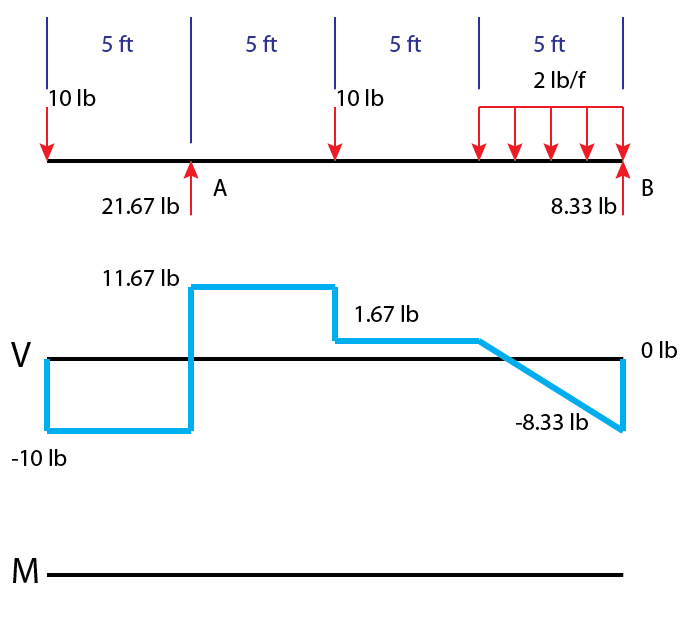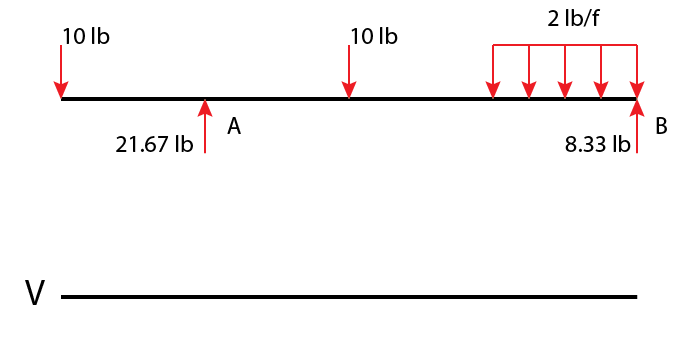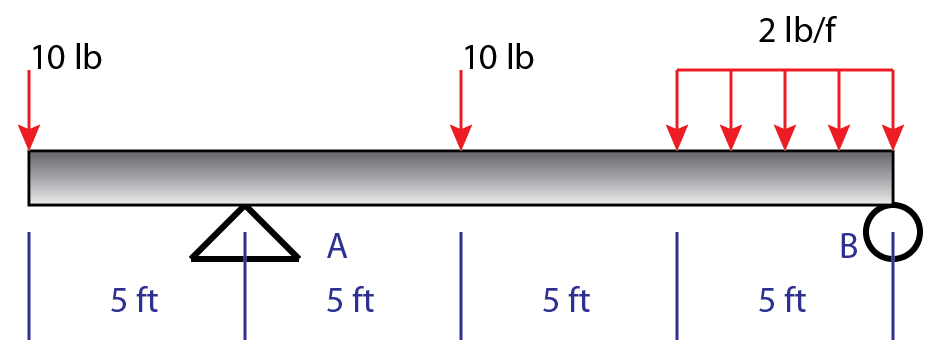Blog Archives
How to Draw Moment Diagrams
Moment diagrams are similar to shear diagrams, use them to find the location and value of the maximum positive and negative moment, or the moment at any specific location.
The easiest and fastest way to construct a moment-diagram is by using the areas of the regions in the shear-diagram. Before doing this you must solve for all the reactions, and solve the shear diagram.
Here is a member that is solved to the desired state to begin working on the moment diagram. The start of a moment diagram (M) is below the existing shear diagram (V).
How to Draw Shear Diagrams
Shear diagrams are an easy way to visualize shear values along a beam or member and also reveal the maximum positive and negative shear values.
The first step will always be to simplify any and all load distributions into point loads and to solve for all exterior reactions.
Begin the shear diagram by drawing a horizontal line, this is the line for zero shear. I like to draw my shear diagrams directly below the actual member so that they line up and I designate my shear diagrams with a big V.
How to Solve for Reactions
The first step in many problems is solving for reactions, here is an example of some situations that you may encounter.
Simplify the distributed load into a point load:
$$ \frac{2lb}{ft} *5ft = 10 lb $$
Since this distribution is constant the load is applied at the midpoint, 2.5 ft to the left of B. (If the distributed load was not linear the point load should be applied at wherever the “center of mass” of the distributed load is; the center of mass of a constant distributed load is the midpoint). Click here to continue reading
Method of Joints
When analyzing a joint you will solve for the forces in all of the members connected to it.
Lets start with H, draw the two unknown forces \(F_{HE}\) and \(F_{HF}\) in tension (away from H). Click here to continue reading









